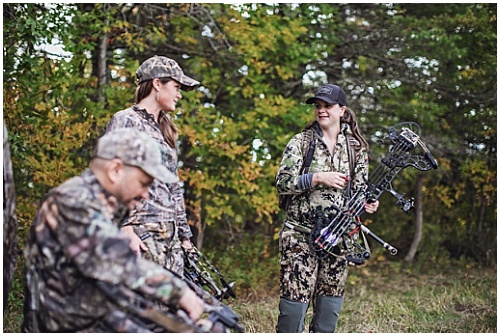September 20, 2021 at 5:41 pm
The state of Maine is a vast region of forested landscapes and unique ecosystems supporting a rich diversity of wildlife and endless opportunities for outdoor recreation. In the last two years, Mainers have turned to the outdoors more than ever, seeking solace through fresh air and fresh food from the field. From 2018 to 2020, Maine Department of Inland Fisheries and Wildlife (MDIFW) has seen a significant increase in hunting interest and participation, and with five seasons to choose from and more antlerless harvest opportunity than we’ve had in decades, the 2021 deer hunting seasons offer another excellent opportunity to get outdoors.

Deer populations in Maine experience ups and downs, linked with altering habitats, harvest rates, predation, and human-induced change. MDIFW works to implement innovative techniques to manage Maine’s deer effectively, prioritizing values such as animal and habitat health and social acceptance; during the 2016 Big Game Planning process, these key factors were identified as the most important by Maine’s public and stakeholders. Currently, northern Maine supports lower than preferred deer numbers, whereas the central and southern areas of the state are in a period of plenty with exceptionally high populations. High deer populations can result in over-browsing of natural habitat leading to decreasing body condition and productivity and local loss of plant diversity. Furthermore, over-abundant deer can result in high levels of deer-human conflict beyond what people are willing to tolerate. To effectively balance the deer population and preserve associated habitats, harvesting does is critical. Does are the engine that drive the deer population and reducing doe numbers is essential to ensuring the population does not grow beyond control. With record permit numbers again in 2021, we hope hunters with any-deer permits take advantage of their opportunity to harvest a doe this season to help maintain that critical balance.
Hunters are frontline conservationists, and there are many ways deer hunters may contribute to the management and well-being of our wildlife. Maine deer hunters provide MDIFW with a multitude of information for the management of the state’s deer population, ensuring healthy deer and deer habitat. These data are collected primarily from hunter-killed animals during the regular firearms season and include sex and age structure, recruitment and mortality estimates, and estimates of hunter effort. Additionally, in a continuing effort to preserve the health of Maine’s deer, Maine deer hunters contribute hundreds of samples each year to be tested for Chronic Wasting Disease (CWD). Early detection is very important in limiting the spread of CWD, so while Maine remains proudly CWD free, MDIFW continues to surveil annually to catch CWD early if it does arrive in Maine. In addition to collecting and testing in-state samples, a prohibition has been enacted on the importation of deer parts that pose the highest risk of introducing CWD; if you hunt for deer, elk, moose, or caribou out of state, remember to follow carcass importation rules and only bring into Maine low-risk materials such as boned-out meat, hardened antlers, hides without the head portion, and finished taxidermy mounts. Lastly, consider hunting with nonlead ammunition if you have the opportunity; the negative health impacts of lead on scavengers is well-documented, and nonlead ammunition is becoming more widely available.
As the deer hunting seasons are upon us, MDIFW wants to thank Maine hunters for their contributions to Maine deer management and our great hunting tradition. It is our sportsmen and women that provide the necessary labor force to ensure we have the data and information that we need to manage Maine’s deer. We wish you the best of luck and hope you’re able to take advantage of all of the great deer hunting opportunities Maine has to offer this year.